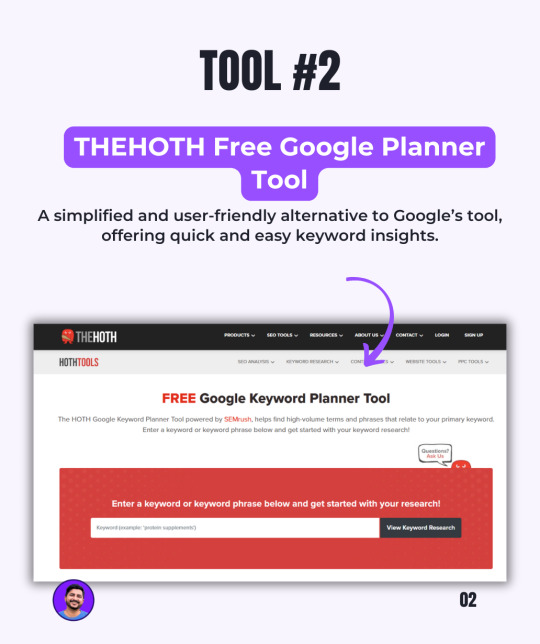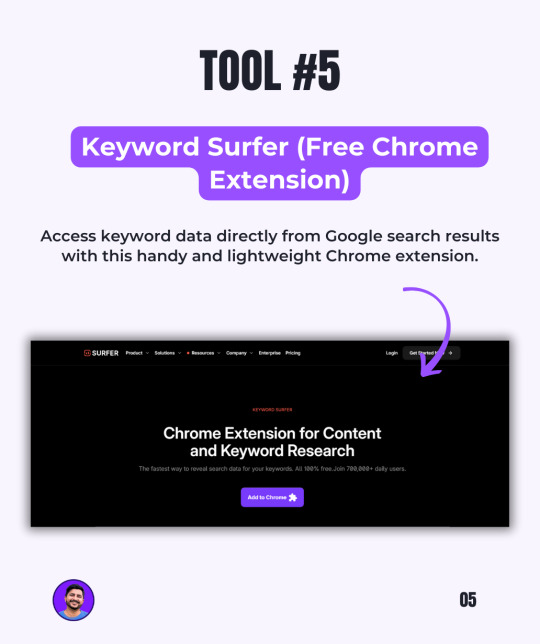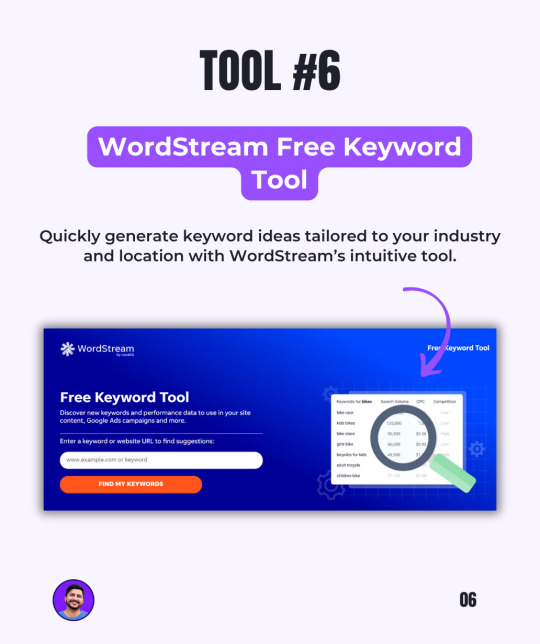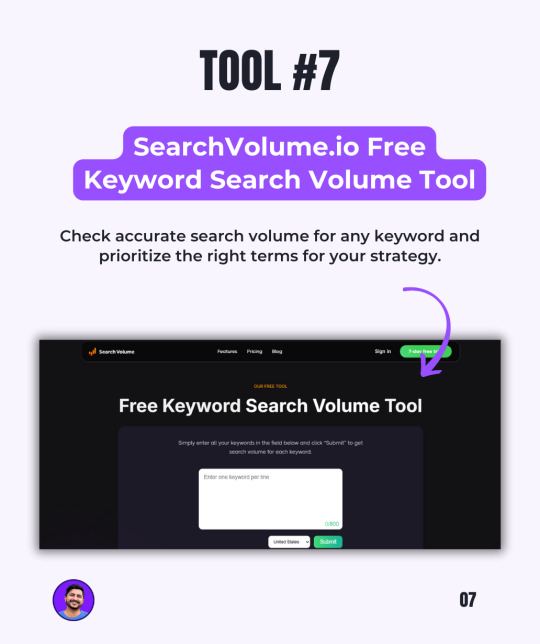#How to research keyword
Explore tagged Tumblr posts
Text
Master AD:



Claes Jansz Visscher:




Master CR:



#doing research into what this exact type of style is called. grotesque and blackwork are the keywords through which i found them#but i want to know what the ciber tribal sygillism looking thingies are called#its insane how cool it looks#ref
7 notes
·
View notes
Text
It really breaks my balls when people tag their visual p*rn with fandom tags. Are you sick? What the literal fuck is wrong with you? This site works through tags! I don't wanna see a post of your butt in the TMNT 2003 /12 tags, Kim. Jesus.
#not even fandom related#Tim rambles#I know sex workers need to- you know#make themselves known#but damn#if someone knows how can I filter that pls let me know#cause in the research I've made there's no way unless they tag something I can block#but their tagging my fandom related keywords#I obviously can't block that#ughhh#brakes my nerves
64 notes
·
View notes
Text

Audine :)
#art#traditional art#watercolour#fanart#vocal synth#audine#maghni#i really like her. i didnt realize her arms were like robot arms until i looked at some design sheets that shit rules#still gave up on the rest of her clothes and put here in a little sundress. you know how i am <3#ALSO i have been trying to write alt text for my drawings now! keyword trying#i did research into guides but that can only get me so far... i hope i can get better at it quickly#HOPEFULLY a combination of my art history major experiences with formal analyses and also just knowing how nvda works will help#HOPEFULLY hopefully i will do my best and keep trying#writing this one made me realize i have no clue what half of the shit i draw is tho LOL i gotta up my vocab
10 notes
·
View notes
Text
"mycroft holmes: detective consulted against his will" or something
evan call / frieren ost was really enough for me to imagine a sherlock holmes webcomic idea with mycroft begrudgingly taking his brother's place as the premise - altho im ways away from getting any designs out but i hope to post art on it soon!
#acd sherlock holmes#mycroft holmes#sherlock holmes#it's gonna be heavy on social commentary#so i've got a lot of research ahead of me#did i mention i was a bbc fan before#keyword is before bc i grew up and saw how Silly It Is
8 notes
·
View notes
Text
How to Create Designs That Work for Your Print-on-Demand Business
Running a print-on-demand business is both exciting and challenging. Whether you're selling on platforms like Redbubble or managing your own store, creating designs that resonate with your audience is the key to success. But how do you craft designs that not only look great but also sell? In this blog post, I’ll guide you through the process of creating designs that work for your print-on-demand business, with tips and tricks tailored to help you stand out in a competitive market. Let’s dive in!
Why Design Matters in Print-on-Demand
In the world of print-on-demand, your designs are your product. Unlike traditional retail, you’re not selling physical inventory—you’re selling ideas. Your customers are drawn to your creativity, so your designs need to:
- Capture attention: Bold, unique designs stand out in search results.
- Resonate with your audience: People buy designs that align with their personality, values, or interests.
- Fit the product: A design that looks great on a t-shirt might not work on a mug or phone case.
Understanding these principles is the first step to creating designs that work for your business.
Step 1: Know Your Niche
The most successful print-on-demand businesses are niche-focused. Instead of trying to appeal to everyone, target a specific audience.
- Research your audience: Who are they? What are their interests, hobbies, or values?
- Find trending niches: Use tools like Google Trends or Redbubble’s trending searches to discover what’s popular.
- Create for your passion: If you’re passionate about your niche, it will show in your designs.
For example, if your niche is cozy, minimalist designs, you could create products that appeal to people who love hygge-inspired aesthetics.
Step 2: Brainstorm Unique Design Ideas
Once you’ve identified your niche, it’s time to brainstorm ideas. Here’s how to get started:
- Use keyword research: Tools like Redbubble’s search bar or Pinterest Trends can help you find popular themes.
- Look for inspiration: Check out competitors, social media, or even nature for fresh ideas.
- Think seasonally: Holidays, seasons, and special events are great opportunities for themed designs.
Pro tip: Keep a notebook or digital folder for design ideas. Inspiration can strike at any time!
Step 3: Master the Tools of the Trade
You don’t need to be a professional graphic designer to create stunning designs. With the right tools, anyone can make high-quality artwork.
- Free design tools: Canva, GIMP, and Inkscape are great for beginners.
- Professional software: Adobe Photoshop and Illustrator offer advanced features for experienced designers.
- Mockup generators: Use tools like Placeit to see how your designs will look on products.
If you’re new to design, start simple. Minimalist designs with clean lines and bold typography are often bestsellers.
Step 4: Optimize Your Designs for Products
Not all designs work on every product. To maximize sales, tailor your designs to fit specific items.
- Consider placement: A design that looks great on a t-shirt might need adjustments for a mug or sticker.
- Use high-resolution files: Print-on-demand platforms require high-quality images to ensure sharp prints.
- Test your designs: Upload them to mockup tools to see how they look on different products.
For example, if you’re creating a design for a phone case, make sure the key elements aren’t cut off by the edges or camera hole.
Step 5: Write SEO-Friendly Titles and Tags
Even the best designs won’t sell if no one can find them. That’s where SEO comes in.
- Use relevant keywords: Include terms your audience is searching for, like “minimalist phone case” or “funny coffee mug.”
- Write descriptive titles: Instead of “Cool Design,” try “Retro Sunset Design for T-Shirts and Stickers.”
- Add detailed tags: Use a mix of broad and specific tags to improve your visibility.
For example, if your design is a cozy winter illustration, your tags might include “winter mug,” “cozy vibes,” and “holiday gift ideas.”
Step 6: Promote Your Designs
Creating great designs is only half the battle—you also need to market them.
- Leverage social media: Share your designs on Instagram, Pinterest, and TikTok.
- Engage with your audience: Respond to comments and messages to build a loyal following.
- Collaborate with influencers: Partner with creators who align with your niche to reach a wider audience.
You can share behind-the-scenes content, like your design process or mockups, to connect with your audience on a personal level.
Step 7: Analyze and Improve
Finally, track your performance to see what’s working and what’s not.
- Check your analytics: Platforms like Redbubble provide insights into your sales and traffic.
- Experiment with new designs: Test different styles, themes, or niches to see what resonates.
- Listen to feedback: Pay attention to customer reviews and comments to improve your designs.
Remember, success in print-on-demand is a marathon, not a sprint. Keep learning and adapting as you go.
Final Thoughts
Creating designs that work for your print-on-demand business takes time, creativity, and strategy. By understanding your niche, mastering design tools, and optimizing your listings for SEO, you can build a successful shop that stands out from the crowd.
You have the power to turn your ideas into products that people love. So, what are you waiting for? Start creating today and watch your business grow!
Looking for unique, cozy designs that inspire and stand out? Visit my Redbubble shop to explore a collection of creative products made just for you!
#Print-on-demand business#Redbubble tips#How to create designs#Print-on-demand design tips#Redbubble design ideas#Niche marketing for POD#How to sell on Redbubble#Print-on-demand success#Redbubble SEO tips#Best tools for POD#Graphic design for beginners#Trending print-on-demand niches#How to optimize designs#Print-on-demand marketing#Redbubble product ideas#Cozy design inspiration#Minimalist design tips#Seasonal design ideas#How to use Canva for POD#Redbubble mockup tips#Passive income with POD#How to sell art online#Redbubble shop strategies#Print-on-demand trends#How to grow a POD business#Print-on-demand branding#Redbubble keyword research#Social media for POD#Redbubble artist tips
3 notes
·
View notes
Text
Ultimate YouTube SEO Guide: Rank Your Videos in 2025
In 2025, YouTube SEO is more important than ever! Ranking your videos on YouTube can make a huge difference in reaching new viewers, boosting engagement, and growing your channel. This guide will cover all the essentials—from basic YouTube SEO tips to advanced strategies to help your videos rank fast.
Understanding YouTube SEO Basics
YouTube SEO (Search Engine Optimization) is the process of optimizing your videos and channel to rank higher on YouTube’s search results. The goal? To make it easier for your target audience to find your content. YouTube SEO focuses on specific elements like keywords, video titles, descriptions, tags, and thumbnails.
YouTube Keyword Research
Keyword research is the first step in effective YouTube SEO. Keywords are the phrases people type in when searching on YouTube. If you use the right keywords, your videos will have a higher chance of appearing in search results.
Start with YouTube’s Search Bar: Type a general topic and look at the suggested keywords. These suggestions are popular search phrases.
Use YouTube SEO Tools: Tools like TubeBuddy, VidIQ, and Ahrefs help you find high-ranking keywords, track video performance, and analyze competitors.
Focus on Long-Tail Keywords: Phrases with three or more words (e.g., "how to rank YouTube videos fast") are more specific and often less competitive.
Optimizing Your Video Title
Your title is crucial for ranking on YouTube. Here’s how to make it SEO-friendly:
Include Your Target Keyword: Place your main keyword in the title.
Make It Catchy: The title should be engaging to encourage viewers to click.
Keep It Short and Clear: Aim for a title under 60 characters for better readability.
Example: If your video is about ranking fast on YouTube, a good title could be “How to Rank YouTube Videos Fast – YouTube SEO Tutorial 2025.”
Crafting an Optimized Description
The description helps YouTube’s algorithm understand your video content. Use it to provide context and additional keywords.
Use Primary and Related Keywords: Include your main keyword in the first few lines.
Add Links and Timestamps: Include links to relevant resources and timestamps for better viewer engagement.
Write for Viewers and Search Engines: Make it informative but natural to read.
Example Description: "Want to learn how to rank YouTube videos fast in 2025? This YouTube SEO tutorial covers all the basics of YouTube video SEO, from keyword research to optimizing titles and descriptions. Perfect for beginners looking to boost their YouTube ranking!"
Adding Tags to Your Video
Tags play a small role in ranking but can still help YouTube understand your content. Use a mix of specific and broad tags.
Include Your Primary Keyword as the First Tag.
Use Related Keywords: Think of terms viewers might search for, like "video SEO," "how to do SEO for YouTube videos," and "YouTube SEO tips."
Avoid Keyword Stuffing: Use only relevant tags, ideally around 5-1
Creating Eye-Catching Thumbnails
A custom thumbnail can boost your video’s click-through rate (CTR), which affects rankings. Here’s how to make an effective one:
Use Bold Text: Use large, clear fonts that viewers can easily read.
Show Emotions: Thumbnails with faces and expressive emotions grab attention.
Be Consistent with Your Brand: Keep a similar style to build a recognizable brand look.
Leveraging Engagement to Boost YouTube Ranking
YouTube loves engagement, so encourage viewers to like, comment, and subscribe.
Ask Viewers to Engage: A simple call to action (CTA) like, “If you found this video helpful, please like and subscribe!” can work wonders.
Reply to Comments: Interaction builds a community and signals YouTube that your video is engaging.
Create Playlists: Playlists keep viewers on your channel longer, increasing watch time.
Watch Time and Session Time
Watch time (how long viewers watch your video) and session time (how long they stay on YouTube after watching) are critical ranking factors.
Hook Viewers in the First 10 Seconds: Start with a hook that explains what value your video will provide.
Structure Your Content: Organize your video into clear sections, so it’s easy to follow.
Use Visuals and Transitions: Visuals keep viewers engaged and watching longer.
How to Rank Videos Fast on YouTube in 2025
For faster rankings, optimize every detail and stay consistent with content. Follow these tips:
Post Consistently: A consistent upload schedule helps YouTube recognize you as an active creator.
Share on Social Media: Promote your videos on social media to drive extra traffic.
Analyze and Adapt: Review analytics to see which keywords, titles, or topics are working best, and adjust future content accordingly.
YouTube SEO Tools to Make It Easier
To make YouTube SEO manageable, consider using these tools:
TubeBuddy: Provides keyword research, tag suggestions, and competitor analysis.
VidIQ: Helps with keyword research, trending topics, and SEO score analysis.
Ahrefs YouTube Keyword Tool: An excellent tool for in-depth keyword research.
Wrapping Text
Mastering YouTube SEO is all about finding the right keywords, optimizing video details, and engaging viewers. By following these YouTube SEO basics, from keyword research to engagement strategies, you can improve your YouTube ranking and grow your channel in 2025. Remember, success on YouTube takes time, but with consistency and effective SEO, you’ll see your efforts pay off!
Happy ranking!
#youtube seo#youtube shorts#youtube channel#youtube music#youtube video#youtube seo expert#youtube gaming#youtube seo services#youtube subscriber#new youtube videos#youtube viral videos#youtube videos#rank youtube videos 2025#youtube video seo#youtube seo tutorial#how to rank youtube videos#seo youtube#youtube seo tips#how to rank youtube videos fast#video seo#seo for youtube#youtube seo tools#youtube seo 2023#youtube seo tutorial for beginners#youtube keyword research#how to rank videos on youtube#seo#seo for youtube channel#seo on youtube#youtube video me seo kaise kare
2 notes
·
View notes
Text
#keyword research tool#dropshipping#home based business#kitchen cleaning#how to blog#link building strategy#x reader#legend of zelda#affiliate marketing for beginners#affiliate marketing
3 notes
·
View notes
Text
i seriously don't get how any country can call itself a democracy without having classes dedicated to teaching how politics work in its schools
#like you're just expected to figure it all out yourself#they'll teach you advanced maths you'll never need to use for a day in your life before they teach you the difference between right & left#the most we got here was like. one subject where they would tell us how the government works like the different branches & all#how elections worked etc but. nothing about how to actually pick who to vote for#nothing about how to actually understand which parties want what or how to decode politicians' speeches#like. people get handed fucking fliers telling them all about what this candidate wants to do if elected#and that's supposed to be enough. but like. people don't get this shit ! you never told them how to !#they don't know dick about the economy or policies or jobs or whatever else#they just look for little keywords in the pamphlet that ring a bell to them and vote for the guy who said the most of those#democracy is a 2 step process it's not just Letting People Vote they have to be informed and educated to make their choice first#but they're not ! nothing prepares you for voting ! it's all left up to You to inform yourself and FUCK most people do Not. lol. lmao even#do you really think your average schmuck is gonna sit down and research the intricacies of each political ideology before picking one#or do you think they're just gonna turn their tv on and vote for the guy who screams loudest#do you think if USamericans were politically savvy donald trump would ever have been president#do you think his winning over so many voters wasn't just a case of ''he said lies they wanted to hear''#do you think if stu mcyeehaw from bumfuck arizona had been taught what ad populum fallacies were he would still have worn the red hat
6 notes
·
View notes
Text
How SEO Helps You Attract Quality Website Traffic

At Dip Digital Pro, we explain that Search Engine Optimization (SEO) is the process of optimizing your website to improve its ranking on search engines, which brings in more qualified and organic visitors. SEO works by improving your content, website technical health, and authority through backlinks.
The main pillars of SEO are:
On-Page SEO: Optimizing your site’s content, meta tags, and internal linking to make your pages relevant and understandable to search engines.
Technical SEO: Ensuring your website is fast, secure, mobile-friendly, and easy to crawl.
Off-Page SEO: Gaining authoritative backlinks and social engagement that increase your site’s trustworthiness.
Focusing on SEO will generate cost-effective and lasting organic traffic that is more sustainable than paid advertising. For a detailed explanation, visit the full article: What Is SEO?
#What is SEO#SEO beginner guide#SEO basics#Search engine optimization explained#SEO for beginners#How SEO works#Importance of SEO#SEO strategies#On-page SEO techniques#Technical SEO essentials#Off-page SEO tactics#SEO tips for beginners#SEO optimization guide#Improve website ranking#SEO best practices#SEO content optimization#SEO backlinks importance#How to do SEO#SEO for small business#SEO tools and techniques#Organic traffic growth#Long-term SEO benefits#SEO vs paid ads#SEO for website visibility#Google ranking factors#Mobile SEO#Website speed SEO#SEO keyword research#SEO audit basics#SEO content marketing
1 note
·
View note
Text
How To Create An SEO Roadmap That Actually Drives Results
Discover how to create an effective SEO roadmap that drives real results. Learn step-by-step strategies, key components, tools, and expert tips to build your organic visibility. How To Create An SEO Roadmap That Actually Drives Results Creating an effective SEO roadmap isn’t just about choosing a few keywords and building backlinks. It’s a strategic process that aligns your business goals with…
#content strategy#how to create SEO roadmap#keyword research#link building#on-page SEO#SEO checklist#SEO goals#SEO plan#SEO roadmap#SEO roadmap template#SEO strategy#technical SEO
0 notes
Text
How to Write Blogs That Get Traffic in 2025
In 2025, blogging is no longer just an art—it’s a strategic science. Millions of new blog posts hit the internet every day. So, how do you make yours stand out? How do you drive real, organic traffic? If you’re a content creator, mastering blogging is essential. For marketers, effective blogging ensures traffic. Business owners in Pakistan need to know how to write blogs that get traffic to…
#blog call to action#blog performance analysis#blog promotion techniques#blog writing strategy#blogging#content readability#content updating strategy#digital-marketing#headline optimization#how to write blogs that get traffic#keyword-research#marketing#on-page SEO techniques#seo#SEO keyword strategy#target audience analysis
0 notes
Text
How to Do Keyword Research with Google Keyword Planner
Step 1: Go to Google Ads.Visit ads.google.com and log in with your Google account. If you don’t have one, create a free Google account first. You don’t need to run ads to use the Keyword Planner, but you do need to set up a Google Ads account. Step 2: Access the Keyword Planner tool.Once you’re in your Google Ads dashboard, click on Tools & Settings in the top menu.Under the “Planning” section,…
#Google Keyword Planner guide#how to find low competition keywords#keyword research tutorial#SEO tools for beginners
0 notes
Text
How to Do Keyword Research with Google Keyword Planner
Step 1: Go to Google Ads.Visit ads.google.com and log in with your Google account. If you don’t have one, create a free Google account first. You don’t need to run ads to use the Keyword Planner, but you do need to set up a Google Ads account. Step 2: Access the Keyword Planner tool.Once you’re in your Google Ads dashboard, click on Tools & Settings in the top menu.Under the “Planning” section,…
#Google Keyword Planner guide#how to find low competition keywords#keyword research tutorial#SEO tools for beginners
0 notes
Text









🚀 𝗦𝘁𝗼𝗽 𝗚𝘂𝗲𝘀𝘀𝗶𝗻𝗴, 𝗦𝘁𝗮𝗿𝘁 𝗥𝗮𝗻𝗸𝗶𝗻𝗴: 𝟳 𝗙𝗿𝗲𝗲 𝗞𝗲𝘆𝘄𝗼𝗿𝗱 𝗥𝗲𝘀𝗲𝗮𝗿𝗰𝗵 𝗧𝗼𝗼𝗹𝘀 𝗬𝗼𝘂 𝗡𝗲𝗲𝗱! 🚀
When I started working with professional coaches,
I realized one common mistake they make:
𝗧𝗵𝗲𝘆 𝗯𝘂𝗶𝗹𝗱 𝗮 𝘄𝗲𝗯𝘀𝗶𝘁𝗲 𝗮𝗻𝗱 𝘄𝗮𝗶𝘁 𝗳𝗼𝗿 𝗰𝗹𝗶𝗲𝗻𝘁𝘀 𝘁𝗼 𝗰𝗼𝗺𝗲.
But without the right keywords, your website stays invisible on Google
— and your ideal clients never find you.
A beautiful website without SEO is like a shop with no signboard.
𝗜𝗳 𝘆𝗼𝘂𝗿 𝘀𝗶𝘁𝗲 𝗱𝗼𝗲𝘀𝗻’𝘁 𝗿𝗮𝗻𝗸 𝗼𝗻 𝗚𝗼𝗼𝗴𝗹𝗲, 𝘆𝗼𝘂’𝗿𝗲 𝗹𝗲𝗮𝘃𝗶𝗻𝗴 𝗺𝗼𝗻𝗲𝘆 𝗼𝗻 𝘁𝗵𝗲 𝘁𝗮𝗯𝗹𝗲.
So, I’ve created this PDF: 𝟟 𝗙𝗿𝗲𝗲 𝗞𝗲𝘆𝘄𝗼𝗿𝗱 𝗥𝗲𝘀𝗲𝗮𝗿𝗰𝗵 𝗧𝗼𝗼𝗹𝘀
— tools I personally use to help my clients find the
right keywords and attract their ideal audience.
𝗪𝗵𝗮𝘁 𝘆𝗼𝘂’𝗹𝗹 𝗹𝗲𝗮𝗿𝗻:🔍
How to find the exact keywords your audience is searching for💡
Tools that show you search volume, competition, and
trends⚡ How to use these tools to boost your Google ranking
𝗗𝗼𝗻’𝘁 𝗹𝗲𝘁 𝘆𝗼𝘂𝗿 𝘄𝗲𝗯𝘀𝗶𝘁𝗲 𝗯𝗲 𝗮 𝗺𝗶𝘀𝘀𝗲𝗱 𝗼𝗽𝗽𝗼𝗿𝘁𝘂𝗻𝗶𝘁𝘆. Download this PDF and start using these tools today.
💬 𝗗𝗠 𝗺𝗲 𝗳𝗼𝗿 𝗮 𝗙𝗥𝗘𝗘 𝘄𝗲𝗯𝘀𝗶𝘁𝗲 𝗮𝘂𝗱𝗶𝘁 𝗼𝗿 𝗰𝗼𝗻𝘀𝘂𝗹𝘁𝗮𝘁𝗶𝗼𝗻. Let’s fix your SEO and grow your coaching business!
Visit now: https://digitaldeeptech.com/keyword-research-services/
#Free Keywords Research Tools#keyword research tools#keyword research hacks#DSWebRank#DigitalDeepTech#How to find keywords
1 note
·
View note
Text

Struggling with keyword research? You're not alone! Finding the right keywords can be confusing, but it’s the foundation of any successful SEO strategy. From search volume to competition analysis, there’s a lot to consider. Without proper research, your content may never reach the right audience. But don’t worry—this guide will break down the essentials of keyword research, helping you discover profitable keywords that boost rankings and attract organic traffic. Whether you’re a business owner, blogger, or marketer, understanding keyword research can make all the difference. Ready to take the guesswork out of SEO? Let’s dive in!
#Keyword research tools for beginners#How to conduct keyword analysis#SEO keyword research best practices
0 notes
Text
youtube
#Digital Nomad Institute#most powerful digital marketing tools for youtube#ai video#ai tools#keyword research tutorial#how to start a youtube channel#digital marketing#how to get more views on youtube#youtube growth#content creation#seo#new ai tools#keyword research#best ai tools#how to grow on youtube#video editing software#keyword research strategies#tools for content creators#youtube seo tools#ai tools for content creation#best tools for youtube creators#Youtube
1 note
·
View note